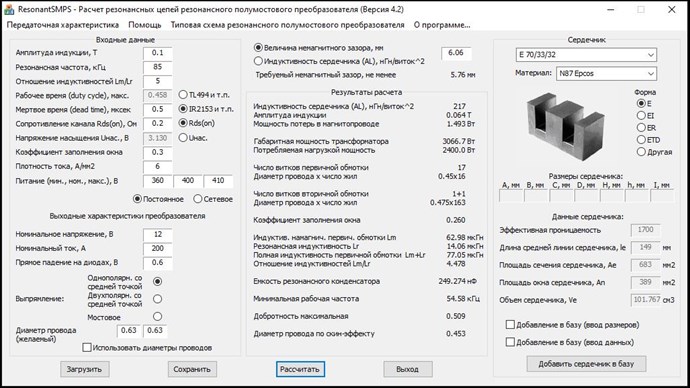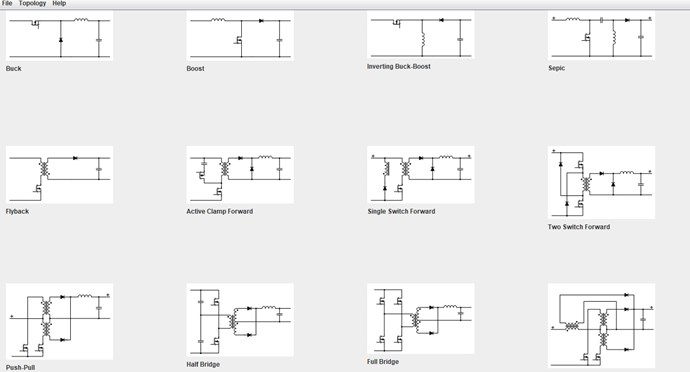My Friends,
This is not an easy task! I would really like to see some productivity here!
It is really sad when one sees an article like this one here, and when translated, see how much work the Russians have put in to help each other building software and utilities, and how little we have!
Don't you think we could do better?
This article here, led me to look for the Software: ResonantSMPS a sub package of All_In_One_2.01

I don't have enough Math and EE Experience to Mathematically predict our Aboveunity Energy Machines, Energy Machines we have running on our bench, and have looked at more options, because our western Science is so far behind, its totally laughable!
I have the programming skills, but not yet the knowledge on Electrical Engineering and Math of such things. This area is where I lack, but have tried intensely to catch up. We have some Math in our: Aboveunity.com Member Calculator, but this is not yet enough to explain these machines!
I have looked for an English version of the ResonantSMPS Software but unfortunately can not find an English Version.
Many here have great knowledge, but I am not sure its what's in this package, I am thinking the Russians are way ahead for a very good reason!
Buck / Boost Converter
We have some calculations for the Buck / Boost Converter! Here is a small class I have written:
///////////////////////////////////////////////////////////////////////////////////////////////////////////////////////////
/// **************************************************************************************************************** //
/// Written by Chris Sykes //
/// Licence: Apache //
/// AboveunityMemberCalculator //
/// //
///////////////////////////////////////////////////////////////////////////////////////////////////////////////////////////
namespace AboveunityMemberCalculator
{
#region Using Statements:
using System;
#endregion
#region Resources:
/*
*
*
* See: https://daycounter.com/Calcuators/Inductor-Current-Power-Calculator.phtml
*
*
*/
#endregion
/// <summary>
/// These equations assumes that the Coil dissapates all current on each cycle.
/// </summary>
public class BuckBoostConverter
{
#region Fields:
#endregion
#region Properties:
#endregion
/// <summary>
///
/// </summary>
/// <param name="TonMax"></param>
/// <returns></returns>
public static double GetFmin(double TonMax)
{
// Fmin = 1 / 2 * TonMax
return 1 / 2 * TonMax;
}
/// <summary>
///
/// </summary>
/// <param name="CurrentSaturation"></param>
/// <param name="Millihenrys"></param>
/// <param name="Volts"></param>
/// <returns></returns>
public static double GetTonMax(double CurrentSaturation, double Millihenrys, double Volts)
{
// TonMax = Isat * mH / V
return CurrentSaturation * Millihenrys / Volts;
}
/// <summary>
///
/// </summary>
/// <param name="Volts"></param>
/// <param name="Milliseconds"></param>
/// <param name="Millihenrys"></param>
/// <returns></returns>
public static double GetPeakCurrent(double Volts, double Milliseconds, double Millihenrys)
{
// Ipk = V * ms / mH
return Volts * Milliseconds / Millihenrys;
}
/// <summary>
///
/// </summary>
/// <param name="Volts"></param>
/// <param name="Milliseconds"></param>
/// <param name="Current"></param>
/// <returns></returns>
public static double GetMillihenrys(double Volts, double Milliseconds, double Current)
{
// mH = V * ms / Ipk
return Volts * Milliseconds / Current;
}
/// <summary>
///
/// </summary>
/// <param name="VoltagePeak"></param>
/// <param name="Dutycycle"></param>
/// <returns></returns>
public static double GetRMSVoltage(double VoltagePeak, double Dutycycle)
{
// RMSVoltage = VoltagePeak * squrt(Dutycycle)
return VoltagePeak * Math.Sqrt(Dutycycle);
}
/// <summary>
///
/// </summary>
/// <param name="CurrentPeak"></param>
/// <returns></returns>
public static double GetRMSCurrent(double CurrentPeak)
{
// RMSCurrent = CurrentPeak / squrt(3)
return CurrentPeak / Math.Sqrt(3);
}
/// <summary>
///
/// </summary>
/// <param name="Volts"></param>
/// <param name="Current"></param>
/// <param name="Dutycycle"></param>
/// <returns></returns>
public static double GetPower(double Volts, double Current, double Dutycycle)
{
// Power = I * V * squrt(DutyCycle) / squrt(3)
return Volts * Current * Math.Sqrt(Dutycycle) / Math.Sqrt(3);
}
/*
* For 50% Dutycycle ONLY:
*/
/// <summary>
///
/// For 50% Dutycycle ONLY:
/// </summary>
/// <param name="Volts"></param>
/// <param name="Current"></param>
/// <param name="Dutycycle"></param>
/// <returns></returns>
public static double GetPowerFiftyPercentDutycycle(double Volts, double Current, double Dutycycle)
{
// Power = I * V / squrt(3)
return Volts * Current / Math.Sqrt(6);
}
/// <summary>
///
/// For 50% Dutycycle ONLY:
/// </summary>
/// <param name="Millihenrys"></param>
/// <param name="Current"></param>
/// <returns></returns>
public static double GetVoltageFiftyPercentDutycycle(double Millihenrys, double Current)
{
// Power = L * I^2 / 2
return Millihenrys * Math.Pow(Current, 2) / 2;
}
}
}
Now, I have found this to be partly accurate in some areas, for the Technology we are working on, but not all! Some areas are a long way out! So heed this warning.
This math will be added to the Aboveunity.com Member Calculator, in the next version!
Two of the best Videos I have seen:
Magnetic Resonance
Magnetic Resonance is the Resonance between Inductance L2 and Inductance L3 where Inductance L1 is the Excitation Frequency. When L2 and L3 are in Resonance, L1 does not see any Load!
We have been told many times by many before us, Magnetic Resonance is Required!
Don Smith used the term: Resonant Energy Methods or Systems as his Document Title!

I again want to reference the above mentioned article here:
MICOR technology. A new generation of power supplies based on the resonance phenomenon
The method using pulse width modulation (PWM) is the answer to the search for a near perfect stabilized power supply. It is known that in a pulsed source the switch is either turned on or off and control is carried out with zero power dissipation, in contrast to a linear stabilizer, where stabilization occurs due to power dissipation in the bushing element. In real-world conditions, PWM gives a reasonable approach to lossless switching at the expense of lower switching frequencies such as 20-40 kHz. If you look at the situation from the other side, you can tell why this frequency range has been popular for so long.
...
The stabilized power supply using the resonant mode is indeed a big leap forward in technology. Although it must be said that the use of resonance phenomena in inverters, converters and power supplies predates the era of semiconductors. It turned out that when using resonance phenomena, it was often possible to obtain good results.
For example, in the first televisions, the necessary high voltages for the kinescope were obtained using a radio frequency power source.
Mathematics
So, if you're reading, and you have SMPS and other Resonant Transformer Math that you can share, Please do so!
Best Wishes,
Chris






 Hello
Hello








